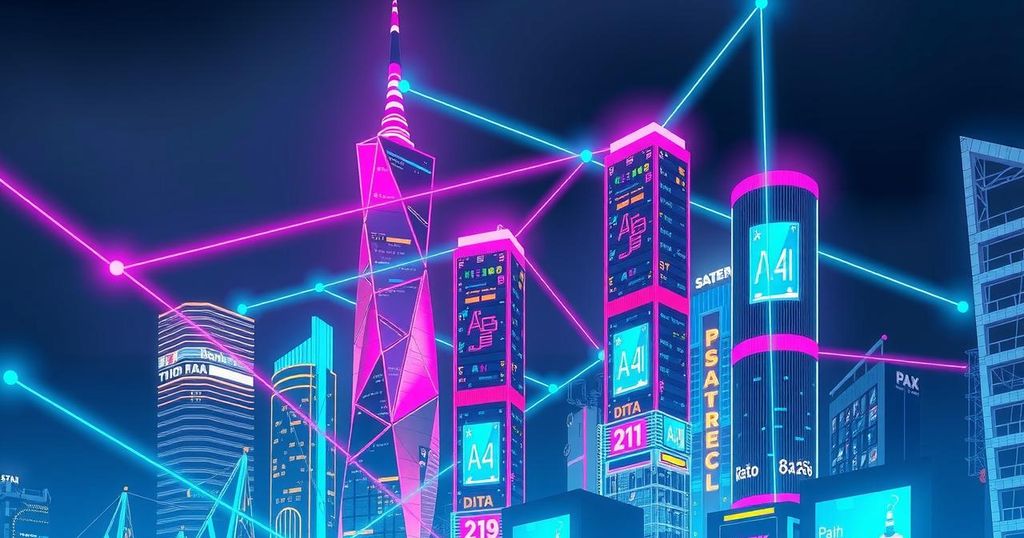The Great AI Lock-In Has Begun
OpenAI is transforming, juggling its dual identity as a groundbreaking AI lab and a conventional tech company. As it faces growing competition, particularly from Anthropic and Google, OpenAI seeks to retain its users and generate revenue through enticing offers and data-centric features. The implications of these changes raise important questions about dependency on AI and relate to user engagement and ethical dimensions of labor.
The rise of AI has brought us to a strange Crossroads, particularly with OpenAI. Here’s the situation: OpenAI is both a pioneer in creating transformative AI technologies and, also, a typical tech business with products. It’s the same organization responsible for unleashing ChatGPT, which started a generative AI frenzy, yet is now pivoting towards traditional business models, making it feel like we are at the start of a sizable transformation.
This duality in OpenAI should not be overlooked. One side conjures visions of dazzling innovations that could surpass human intelligence, while the other operates like a regular corporation—think social networks, new hardware, and updates to existing services. For example, there’s that “image library” feature announced just last week and the shiny new ability to pull up past chats for personalized responses. This aspect of OpenAI feels much like its big-name rivals, such as Apple and Google, who all fight to keep us engaged and, truthfully, a bit locked in.
Now, let’s dive deeper into the mechanics of this. The most successful tech giants don’t just offer a single product; they create ecosystems. Owning an iPhone, for instance, makes using iCloud and Apple Pay seamless. If your friends use different systems, well, that’s a real hassle. In contrast, switching chatbots? That’s as easy as opening a new tab—very low barrier. So, for AI startups, the game is a bit rough. OpenAI doesn’t have a vast ecosystem like Apple or Google at its back, yet here it sits, claiming a staggering 800 million weekly users. But it’s not just about the numbers; it’s also about retaining them.
Losing users isn’t imaginary; it’s palpable. OpenAI faces competition from the likes of Anthropic and Google. Collecting user data from interactions—like chats and preferences—could be a way to hold onto them. Perhaps that’s why OpenAI is tempting university students with two months of free access to a premium tier of ChatGPT. Think of it as a time-tested marketing strategy so many companies have employed over the years. I mean, remember when Hulu was free? It’s a familiar tech play.
Speaking of strategies, OpenAI has employed executives from notable tech companies like Meta and Twitter to ramp up its commercial operations. It’s a testament to how vital it is for them to blend this tech lab identity with a commercial one. Drawing a line between intellectual innovation and business practicality—this is a tightrope they seem to walk effortlessly. They’ve claimed that this approach helps familiarize people with AI and allows for practical testing of its limitations.
But let’s not kid ourselves; there’s a shift happening here. OpenAI is moving from a nonprofit ethos to a model that leans more toward profit. Sure, using AI to discover new treatments for diseases is noble, but eventually, they will need to make money off everyday users. Just last year, the company lost over a billion dollars. In an email, a spokesperson remarked that “competition is good for users and US innovation,” pointing out how accessible ChatGPT is. But, isn’t it a bit concerning, this push things?
Others like Anthropic and Meta are following different paths. Anthropic has offered integrations with existing tech tools to promote its chatbot, while Meta has made its Llama AI models available for free. They’re trying to establish a foothold, and in a way, OpenAI seems to be straddling both worlds. It wants to cherry-pick the benefits of being both a gated community and the foundation for widespread AI use.
Overall, the landscape of generative AI is starting to feel more like a battle for user attention than outright revolution. With vast amounts of data fueling tailored ads and services, there’s a danger of becoming overly reliant on AI just like we have on smartphones. And remember, the workforce—whether content moderators or those involved in building AI data sets—faces tough realities to keep this moving forward. As OpenAI dances between innovative tech and traditional business, one question persists: which OpenAI will come to define its legacy?
In summary, OpenAI is navigating a complex dual identity as both a cutting-edge AI laboratory and a conventional tech business. The company must balance user engagement and innovation with the financial realities of generating revenue as competition grows. As the landscape of generative AI evolves, the implications of user dependency and the ethical dimensions tied to labor and data collection remain vital questions. Ultimately, it remains unclear which identity will dominate OpenAI’s future.
Original Source: www.theatlantic.com




